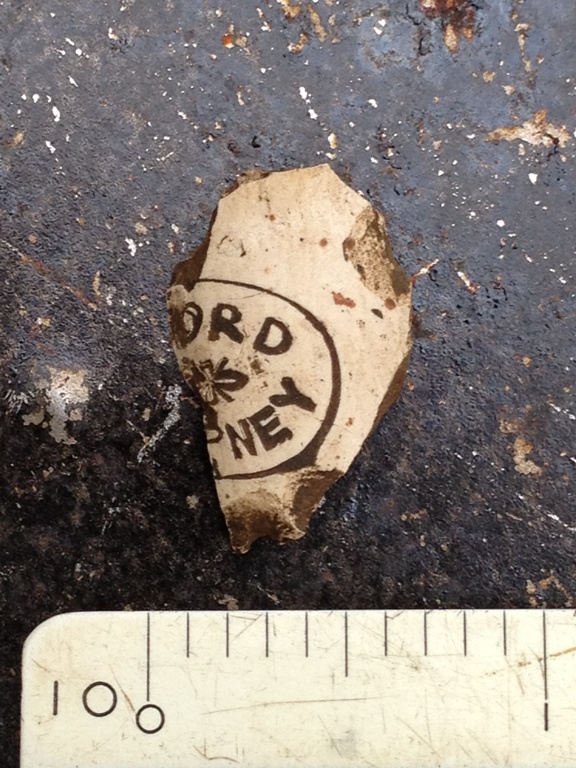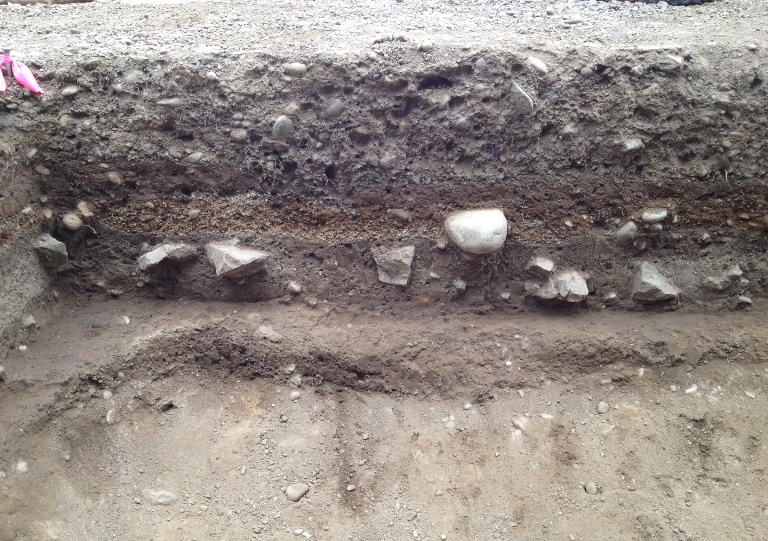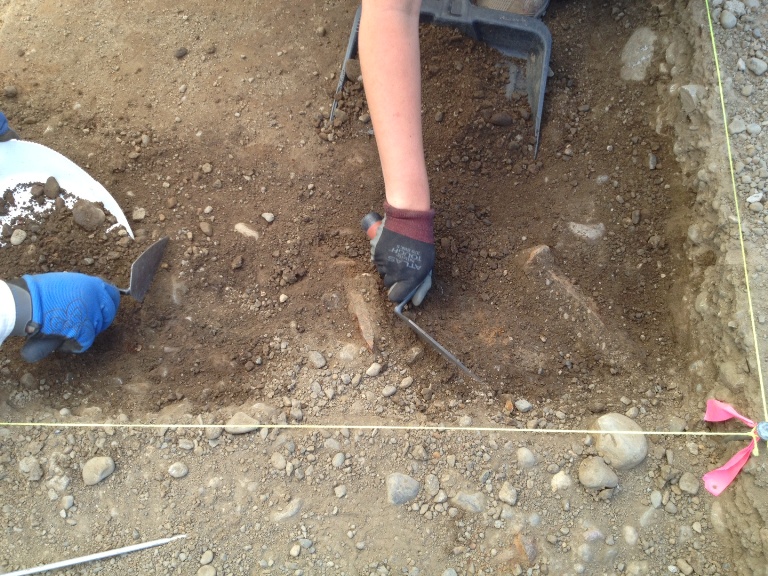
This Stepney tobacco pipe bowl fragment with a bee logo was manufactured by John, Jesse and Thomas Ford in the borough of Stepney, London. Approximately 95% of the pipes recovered at Fort Vancouver are Ford pipes. It was found at the house site of Little Proulx.
Tobacco was very popular at Fort Vancouver during the Hudson's Bay Company period, and pipe smoking was the most popular method of consuming it. The most common type of pipe found at Fort Vancouver are white clay pipes like this one.

The angular rocks protruding from the side of this unit near Little Proulx's house site may be the edge of the central hearth and fireplace of Proulx's house.

In this photo, students Drew Carey, Kate Damon, Anuhea Naeole, and Roz Crews describe ceramic types in the temporary archaeology laboratory at Building 405 near the dig site. An introduction to the material culture of Fort Vancouver is an essential part of the field school.

These students are excavating shovel tests - 50 cm by 50 cm squares - along the old World War I-era railroad grade east of the Village on the site of the Fort Vancouver Orchard. In the background, you can see the bastion of the reconstructed Fort.

In this unit, students are uncovering railroad spikes associated with the World War I-era Spruce Mill spur that ran through the South Barracks. These strata rest above the Little Proulx house site.
